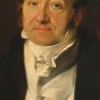
Mark Schoenfield, “The Trial of James Stuart (1822): ‘Abuse of the Press, and Duelling'”
This essay explores the trial of James Stuart on the charge of murder, for fatally shooting Alexander Boswell (James Boswell’s son) in a duel. The dispute between Stuart and Boswell was part of the acrimonious paper war between Scottish Whig and Tory newspapers. Stuart’s acquittal as well as the mode of his defense, largely conducted by Henry Cockburn and Francis Jeffrey (both Whig lawyers and the latter the editor of the Edinburgh Review), demonstrate the mutual reliance and interconnections between the periodical press, the illegal practice of dueling, and the criminal court system.
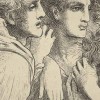
Anna Maria Jones, “On the Publication of Dark Blue, 1871-73″
Dark Blue (1871–73) was a monthly magazine, edited by Oxford undergraduate John Christian Freund, which folded two years after a brilliant debut. During its brief run, it brought together a stunning list of literary and artistic contributors, including Dante Gabriel Rossetti, A. C. Swinburne, William Morris, Andrew Lang, Mathilde Blind, Sheridan Le Fanu, Simeon Solomon, and Ford Madox Brown, who produced aesthetically and sexually daring poetry, art, and criticism. However, it also strove to “appeal to the whole English-speaking public,” as Freund put it, and, thus, included much that might be described as middlebrow, even conservative. Whereas individual texts from Dark Blue, such as Le Fanu’s Carmilla, have received considerable attention, scholars have devoted very little sustained attention to the journal beyond noting its importance as an “artifact” in the history of the Pre-Raphaelite Movement and British aestheticism, and registering puzzlement at the journal’s eclecticism. This essay returns to Dark Blue to uncover common threads among dissimilar writers and artists. With particular attention to the journal’s commitments to transnationalism, I trace three intertwined threads—synesthesia, translation, and sexual dissidence—as they manifest in key texts by Swinburne, Solomon, Le Fanu, and others. Reading these texts in their original context not only demonstrates Dark Blue’s importance to early formations of aestheticism but also helps us to see how aestheticism connects with, rather than stands in opposition to, mid-Victorian culture.
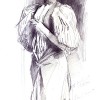
Meaghan Clarke, “1894: The Year of the New Woman Art Critic”
In 1894, satirical journals such as Punch mockingly identified the phenomenon of the New Woman, as found in novels, plays and articles, as an intellectual and independent figure. These mannish representations of professional women seem impossible to reconcile with the aesthetic and fashionable realms of late Victorian art and culture. Studies have frequently considered the role of Victorian women as models or sitters—objects of a male artist’s inspiration. However, other career paths for women were possible. Many women were successful artists and an alternative entrée into the art world was journalism. This article will posit that women art journalists provided a living example of professional opportunities for intellectual New Women. Although their work has been largely left out of accounts of the period, they contributed to key developments in art history at the end of the century. To begin with, I will touch on the history of art writing and its development as a professional avenue for women. Then, I will explore specific themes in order to consider the diversity of their critical responses to contemporary British art circa 1894. This will encompass women’s writings on Pre-Raphaelite and academic artists as “celebrities,” groups influenced by French Impressionism in Newlyn and St. Ives, London Impressionists and Glasgow Boys, as well as art and culture beyond Britain.

Florence S. Boos, “The Education Act of 1870: Before and After”
Nineteenth-century England was relatively backward in providing its citizens with basic skills. Education was highly stratified by class, and pervasive child labor, sectarian religious competition, and reluctance to levy taxes for schools all delayed the systematic provision of elementary education for the children of the working-classes. The Education Act of 1870, which acknowledged and codified for the first time a Crown responsibility for elementary schools, was a watershed in the provision of universal instruction. Even this advance had been hotly contested, and it would be another twenty years before (almost) all British children benefited from a primary school education. Critics of the Education Act of 1870 and its successors noted that the system of inspections it mandated tended to encourage rote learning and limit the range of subjects taught, and those who favored secular public education, including workers’ organizations, resented continued government support for sectarian schools.
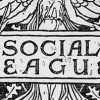
Florence S. Boos, “The Socialist League, founded 30 December 1884”
The Socialist League was one of several early socialist groups which arose in Great Britain during the 1880s. Among these, the League was distinctive for its eclectic membership and its focus on education and outreach as the most effective means to social change. Its notable members included William Morris, Tom Maguire, Andreas Scheu, Bruce Glasier, and for a time, Friedrich Engels, Eleanor Marx, and Edward Aveling. During its four years of greatest activity from 1885 through 1889, its vigorous program of lectures, open-air meetings, and publications, including Commonweal, reached a wide audience through campaigns on behalf of free speech, miners’ strikes, an international workers’ movement, and the reorganization of society “from the root up.” Its internationalism, strong support for the Second International, and consistent anti-imperialism gave its revolutionary ideals a broad, forward looking cast. Its focus on education, outreach, and alternative forms of social organization also attracted writers, artists and intellectuals who promoted its holistic ideals through creative works and contributed to its journal Commonweal. On the other hand, as an organization founded before the election of working-class representatives seemed feasible, its continued commitment to advocacy and “pure” socialism—as opposed to party politics—ultimately rendered it less viable than more pragmatically oriented groups such as the emerging Independent Labour Party.
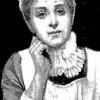
Arlene Young, “The Rise of the Victorian Working Lady: The New-Style Nurse and the Typewriter, 1840-1900”
The increasing demographic imbalance between men and women in Britain in the nineteenth century forced many women and girls from the middle classes to seek employment to maintain themselves because, in the words of one commentator, “there were not enough husbands to go round.” Working for pay, however, was considered déclassé and the employments that emerged as two of the most popular for middle-class women, nursing and typewriting, had to overcome cultural resistance.
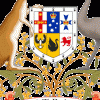
Ann Curthoys, “Settler Self-Government versus Aboriginal Rights, 1883 – 2001: The Shocking History of Section 70 of the Western Australian Constitution”
This essay describes the failed attempt by the British government to retain control over Aboriginal policy even while establishing self-government for the colony of Western Australia. The British made the attempt through a clause (Section 70) in the colony’s 1889 Constitution, which provided that £5000, or one per cent of the annual revenue of the colony when it exceeded £500,000, be set aside annually for the welfare of Aboriginal people. In addition, the British-appointed and controlled Governor, rather than the colonial government, would manage Aboriginal policy. The settlers hated the clause and in 1897 succeeded in persuading the British government to repeal it. Yet Section 70 was not forgotten, a legal challenge in the Australian High Court to its repeal failing as recently as 2001. The story of Section 70 provides a window for viewing the conflicts and collusions between imperial authorities and their settler colonies on questions of Aboriginal policy.
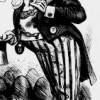
T. J. Tallie, “On Zulu King Cetshwayo kaMpande’s Visit to London, August 1882”
In August of 1882, the deposed Zulu monarch Cetshwayo kaMpande arrived in London to plead for the restoration of his kingdom, from which he had been deposed following the Anglo-Zulu War of 1879. Despite the ferocity of the war, particularly after Britain’s humiliating defeat at the Battle of Isandhlwana in January 1879, the newly elected Gladstone government sought to repudiate larger imperial goals and reversed their decision, approving Cetshwayo’s restoration. This article focuses on the depictions of Cetshwayo in the metropolitan press during his momentous 1882 visit.
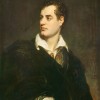
Jane Stabler, “Religious Liberty in the ‘Liberal,’ 1822-23”
A survey of the negative twentieth- and twenty-first-century critical reception of the Liberal; a summary of the history of the journal and a re-evaluation of the philosophical and political coherence of the journal, focusing on its defence of religious liberty and suggesting that religious free thought is a previously overlooked component in the politics of liberalism. The criticism of doctrinal rigidity and advocacy of different forms of religious toleration evident in the four issues of the Liberal support the claim that the journal forms a lucid and intelligible cultural intervention.
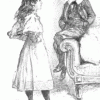
Claudia Nelson, “Mass Media Meets Children’s Literature, 1899: E. Nesbit’s The Story of the Treasure Seekers“
Looking both backward and forward, E. Nesbit’s The Story of the Treasure Seekers stands at the intersection of Victorianism and modernism. The novel crosses borders in another sense as well: in its handling of references to advertising, newspapers, and iconic historical events, it highlights the extent to which fact and fiction, reportage and mythmaking, alike depend upon artifice. The publication of Nesbit’s breakthrough work, which foregrounds the importance of mass culture to middle-class children’s imaginations, marks a historical change in perceptions of children’s relationship to consumerism.
